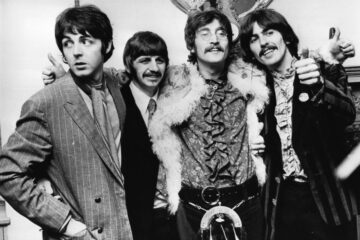Roger Keith ‘Syd’ Barrett, the co-founder of Pink Floyd, was a pioneering artist whose experimental techniques have inspired countless musicians. However, the singer’s penchant for progressive drugs would ultimately be his downfall, leading to one of the most tragic stories of excess in rock music history.
The 1960s remain synonymous with free-living, explicit drug-taking, and rock stars forging a genre that would change the course of contemporary culture – all while living their lives to the absolute maximum. The decade proved to be particularly revolutionary in terms of popular music; the evolution of rock flourished, and Pink Floyd became a significant part of that.
Barrett, a man responsible for writing the majority of early Pink Floyd material, pioneered guitar techniques such as feedback, dissonance and distortion, all while living the rock and roll lifestyle to its utmost. However, after years of fraught tension between him and his bandmates, Barrett was eventually replaced in the band by David Gilmour. The actual reality of his severe mental health collapse not coming to reality until years later.
Barrett’s influence during Pink Floyd’s early years was profound, and his whimsical lyricism and avant-garde musical sensibilities shaped the band’s identity. His kaleidoscopic compositions and pioneering guitar work painted sonic landscapes that defied conventional norms, encapsulating the burgeoning psychedelic movement of the era.
However, the group had grown weary of Barrett’s continued drug abuse, and it had started to affect his playing ability. Rather than expanding his mind, the LSD had started to envelop it. Barrett was soon hospitalised amid claims of serious mental illness. This situation arose after a notorious and very public display of excessive use of psychedelic drugs.
Having once been described as a joyful, friendly and extroverted character, reports began to emerge that Barrett had developed “a blank, dead-eyed stare” and would go missing for days on end amid heavily psychedelic binges. Ultimately, it would prove to be his downfall.
Barrett’s antics had developed from intense mood swings and catatonic periods right up to on-stage meltdowns and refusing to play in front of an audience, instead choosing to mime along and wander aimlessly around the stage. An urban myth says that before one performance in late 1967, Barrett reportedly crushed a Mandrax (also known as Quaalude’s) tranquilliser pill, smeared a tube of Brylcreem into his hair and around his face, which, under the heat of the stage lighting, made him look like “a guttered candle” as he became more incoherent, staring darkly into the crowd.
While Barrett’s mental health deteriorated amid his heavy psychedelic usage, many fans argued that his experimentation at that time is what built Pink Floyd’s foundations, leading to their trailblazing sound.
Barrett’s reckless sense of freedom made him something of a cult legend within rock music, with stories of his long and seemingly endless trips written into the archives. For Nigel Lesmoir-Gordon, a filmmaker who regularly enjoyed the company of Barrett, the subject matter for his next film was sitting right in front of him.
For his short film, simply titled Syd Barrett’s First Trip, Gordon split his 11-minute project into two sections, which showed the musician’s transition. The film “just happened… It is an unselfconscious film. It was not planned,” Gordon said.
With footage also filmed by Lesmoir-Gordon’s wife, Jenny, the first part of the film shows Barrett and a group of friends during their first LSD trip, exploring ‘Gog Magog Hills’ before going on the search for mushrooms. This moment, Lesmoir-Gordon explains, was Barrett’s first furore into the psychedelic world.
The film’s second part fast-forwards a few years to 1967; Barrett and Pink Floyd have just signed their major contract with EMI and are inside the iconic Abbey Road Studios laying down some new tracks. Describing the film on its official IMDB page, Lesmoir-Gordon explains: “I shared the flat with some close friends from Cambridge, including Syd Barrett, who was busy becoming a rock star with Pink Floyd. A few hundred yards down the street at 101 Cromwell Road, our preternaturally cool friend Nigel was running the hipster equivalent of an arty salon.”
He continued: “Between our place and his, there passed the cream of London alternative society—poets, painters, filmmakers, charlatans, activists, bores and self-styled visionaries.”
Here it is, one of the self-styled visionaries.



